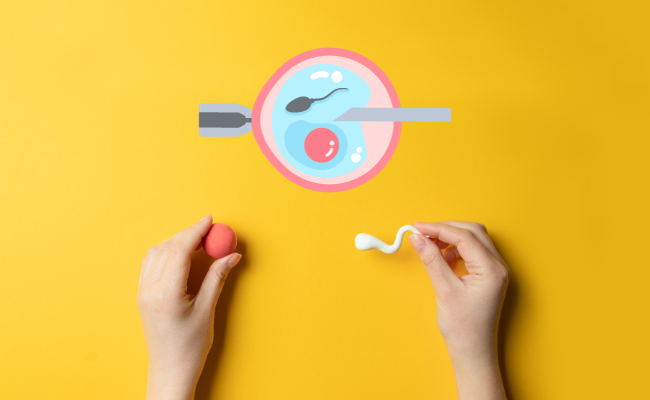Know about Artificial Insemination
- December 27, 2023
- No Comments

What is Artificial Insemination?
Artificial insemination (AI) is a widely adopted reproductive technique utilized to overcome fertility issues in both human and animal breeding programs. This method involves introducing sperm into the female reproductive system through means other than natural sexual intercourse, providing a solution for challenges such as unexplained infertility or situations where a partner lacks viable sperm, as seen in same-sex couples.
In the intricate process of conception, sperm must navigate from the vagina through the cervix, into the uterus, and finally reach a fallopian tube for fertilization. However, mobility issues or other fertility complications can hinder this journey. Artificial insemination serves as a valuable intervention in these scenarios, offering an effective method to address various reproductive challenges and assist individuals in achieving conception.
Why Artificial Insemination?
- There are several reasons why individuals or couples may opt for artificial insemination. One of the primary reasons is fertility challenges, where natural conception proves difficult. It can be due to male infertility, low sperm count, or issues related to the female reproductive system. Additionally, same-sex couples and single individuals looking to start a family may also choose artificial insemination to achieve pregnancy.
- Another significant factor is the ability to select donors based on specific criteria, such as health, intelligence, or physical attributes. This level of control over the genetic material used in the insemination process allows for a more tailored approach to family planning.
How is Artificial Insemination Performed?
Artificial insemination can be carried out through various methods, but the most common ones include intrauterine insemination (IUI) and intracervical insemination (ICI).
- Intrauterine Insemination (IUI): In this method, the sperm is processed and concentrated before being directly placed into the woman's uterus during her fertile window. This increases the chances of the sperm reaching the egg for fertilization.
- Intracervical Insemination (ICI): This method involves the introduction of sperm into the cervix, allowing for a more natural pathway for sperm to travel towards the uterus. It is a less invasive procedure compared to IUI.
The sperm used in artificial insemination can come from a partner (homologous insemination) or a donor (heterologous insemination). Donor sperm is carefully screened for genetic and infectious diseases to ensure a healthy and safe insemination process.
Treatment Solutions in Artificial Insemination
- Ovulation Induction: Before artificial insemination, women may undergo ovulation induction to stimulate the ovaries to release multiple eggs. This increases the chances of successful fertilization.
- Sperm Processing: Sperm collected from either a partner or a donor undergoes processing to concentrate the healthy, motile sperm. This step is crucial for enhancing the likelihood of fertilization.
- Timing: Artificial insemination is typically performed during the woman's fertile window, which is determined based on her menstrual cycle and ovulation patterns.
- Medical Monitoring: Throughout the artificial insemination process, medical professionals closely monitor the woman's reproductive cycle. This may involve tracking hormone levels and conducting ultrasounds to ensure optimal timing for the procedure.
Benefits of Artificial Insemination
- Increased Pregnancy Rates: Artificial insemination can significantly increase the chances of pregnancy for couples struggling with fertility issues. The controlled introduction of sperm into the reproductive system enhances the likelihood of successful fertilization.
- Genetic Screening: Artificial insemination allows for careful selection of sperm donors based on specific criteria. This screening process helps in minimizing the risk of passing on genetic disorders and ensures a healthy genetic background for the child.
- Non-Invasive Procedure: Compared to more complex assisted reproductive technologies such as in vitro fertilization (IVF), artificial insemination is a less invasive procedure. This makes it a more accessible and less stressful option for many couples.
- Controlled Family Planning: Artificial insemination provides individuals and couples with greater control over their family planning journey. The ability to choose donors based on specific characteristics empowers them to make informed decisions about the genetic makeup of their future child.
- Cost-Effective: In comparison to more advanced fertility treatments, artificial insemination is often more cost-effective. This makes it a viable option for individuals and couples seeking assisted reproductive solutions without the financial burden associated with some other techniques.
Comments (0)